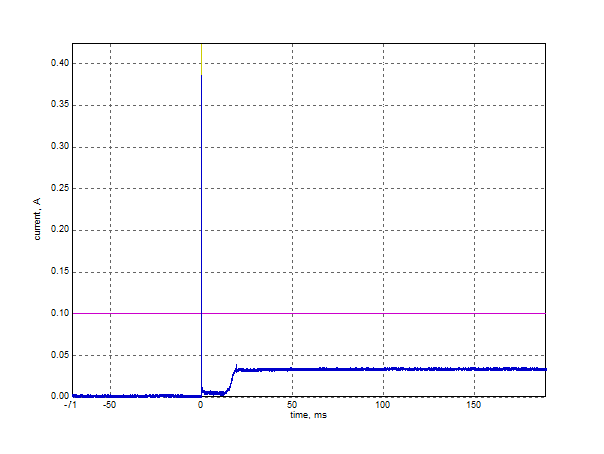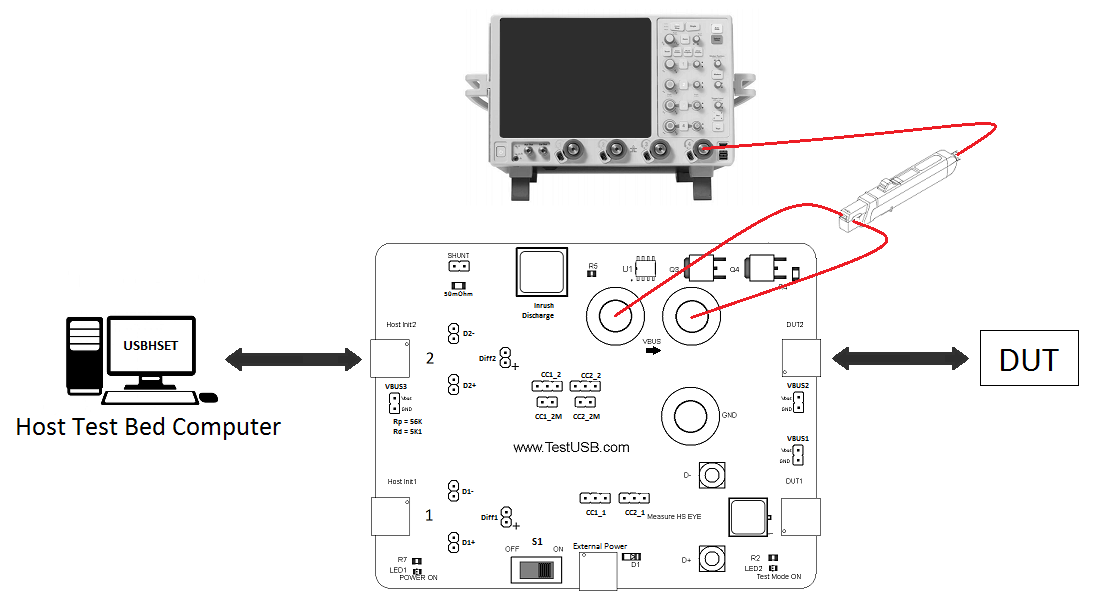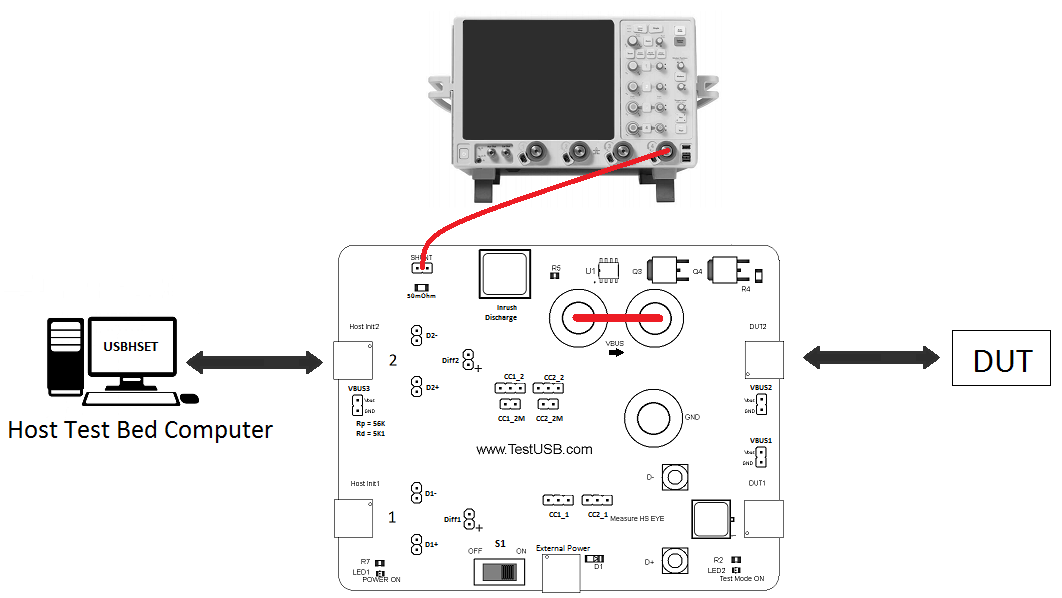Inrush Current
USB 2.0 Specification, Section 7.2.4.1
The purpose of the test is to ensure that
the current consumed due to bulk capacitance and peripheral startup
does not cause a voltage drop below valid levels that causes other
devices to drop out. For this measurement a current probe, scope and Inrush Current Test Fixture is
needed. The scope should have a record time of 100ms at 1 Mega sample
per second. The calculation of the Inrush can be made with USBET
by saving the Inrush waveform as *.csv or *.tsv. Inrush current is
measured for a minimum of 100 milliseconds after attach. Attach is
defined as voltage rising to a valid level on the peripherals USB power
line. Any current exceeding 100 mA during the 100ms interval is
considered part of the inrush current event. The inrush current is
divided into regions.
A region is an interval where the current exceeds 100 mA until the time
the current falls below 100 mA for at least 100 us. There can be
multiple inrush regions during the 100 ms period. Pass/Fail
determination is done by the region having the highest charge value.
The failures for Inrush mostly occur due to a too large capacity
between Vbus and GND. The USB 2.0 Spec allows a maximum capacity of
10uF and therefore a maximum Inrush of 50uC.
Therefore, the total sum of capacity may not be higher that 10uF. Also,
the device under test cannot consume more that 100mA during this 100ms
of the start up. Common failures are that there is somewhere a to high
capacitance on Vbus or that the device start consuming to much current in unconfigured state
.
When doing the measurement make sure that you calibrate the current probe to 0mA before doing the measurement since a current probe will get quickly a DC offset that will result in a wrong measurement. It's also advisable to use the high resolution acquisition modes to reduce "the noise" on the signal.
Note that for Type-C SNK and DRP Inrush testing need to be do under different conditions. The Inrush test procedure and details can be found here.

The inrush measurement can be done with the test fixture by using a current clamp as followed

Or by using a differential probe over the shunt resistor of the test fixture.

Press the dischare button of the fixture for a few seconds and at release the Inrush event should be visable.
More background on the inrush can be found at Inrush Current Test Description of the USB-IF.
